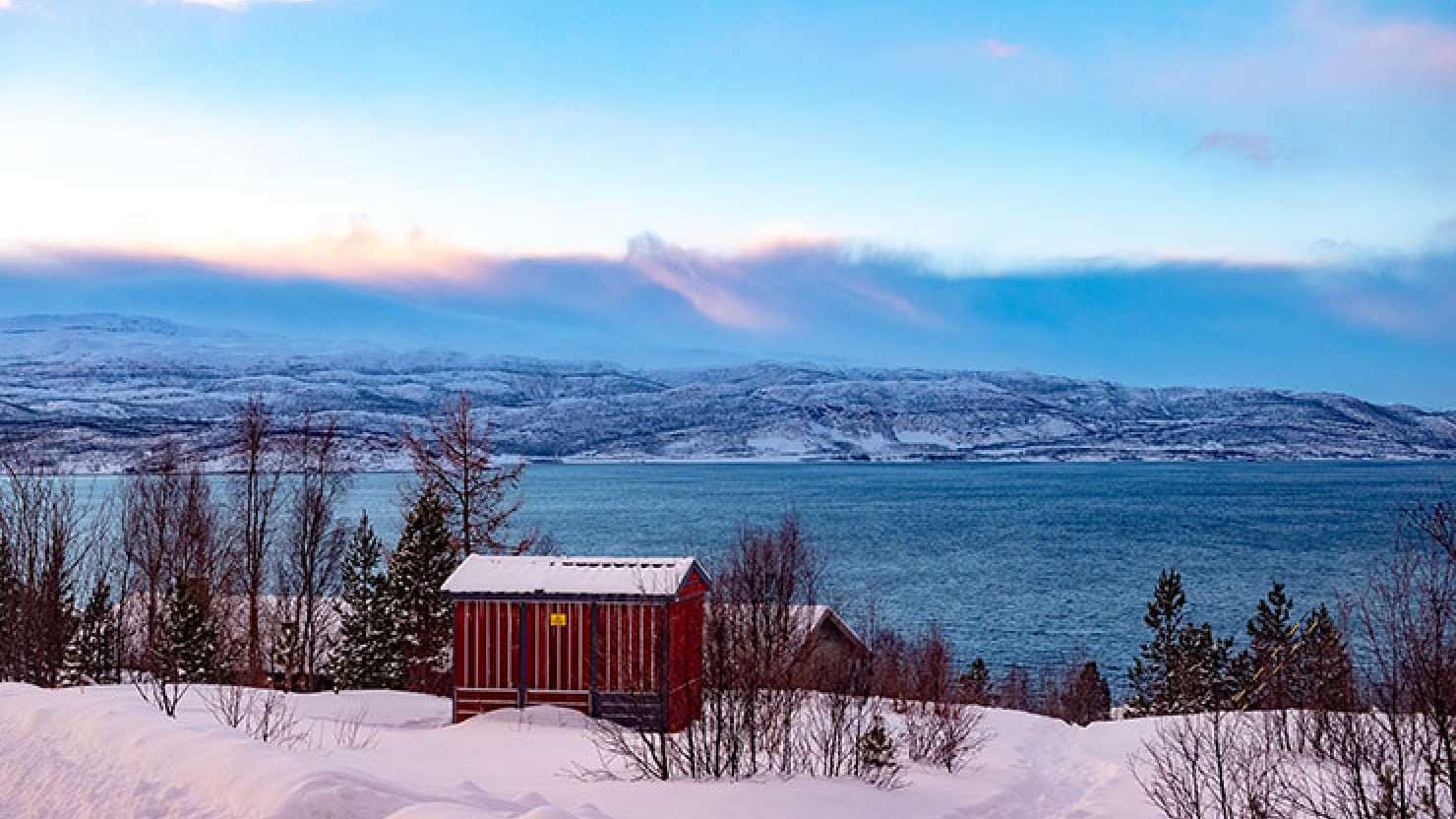What's new for winter 27/28
Explore more on Destinations

Whether you’re searching for the magic of the Northern Lights or a slice of paradise in the summer sun, Alta offers year-round adventures in picture-perfect surroundings. Indulge your inner Arctic explorer on a cruise to this spectacular region.
Country: Norway
Coordinates: 69.9689° N, 23.2716° E
Alta is the largest town in the newly created county of Troms og Finnmark (formed when two formerly separate regions, Troms and Finnmark, merged in 2020) in Norway’s extreme northeast. It sits well within the Arctic Circle and is one of our most northerly ports of call.
Population: 20,000
Currency: Norwegian krone
Language: Norwegian. English is widely spoken.
Climate: Alta has a subarctic climate, but its sheltered position at the head of the Altafjord means it’s spared the worst of the winter storms. Summer sees average temperatures of 10-15ºC, while in winter they tend to hover between -10 and 0ºC. The sun doesn’t rise from late November to mid-January; from mid-May to late July, it doesn’t set.
When to visit Alta: Year round – in warmer weather to enjoy the long, drawn-out days, and in the colder months to search for the Northern Lights and have fun in the snow.

Human activity in Alta dates back to 4200 BC, as evidenced by the thousands of paintings and engravings found in several sites just outside the town. The carvings were discovered in the 1970s and today are an open-air museum and a UNESCO World Heritage site.
Some of the first settlers of Alta were the Sámi, Europe’s northernmost indigenous people. Their presence in Northern Europe can be traced back some 5,000 years, and today, they maintain a vibrant culture that can be seen in everything from traditional costumes and handicrafts to contemporary music and design.
Alta was a key strategic location during the Second World War. German forces based the battleship Tirpitz in the Altafjord, and Alta was damaged by Allied raids and fire. It was rebuilt in the following years and so much of its architecture is distinctly modern.

Alta appeals to lovers of the great outdoors. And because it enjoys wildly contrasting seasons, you can have a completely different experience from one month to the next.
Shore experiences manager P.J Gould has visited Alta twice, both times on Aurora in October, and describes the city as ‘friendly, spectacular and memorable’.
‘When we arrived in the harbour, we pulled into a white blanket of land,’ he says. ‘It was dusk, as the sun sets at 1pm in autumn. It had just begun to snow and everything felt surreal.’
He says it’s the people and the environment that make Alta unique. ‘Alta is special as it enables ships to visit the most northern territories of Norway. The people are friendly and willing to show you what they have to offer. Once when we were on the In Search of the Northern Lights tour, the guides were all schoolteachers volunteering to show guests how to set their cameras up to capture the best pictures. They are very in tune with nature and respect the environment that they live in.’

Despite its small size, Alta has lots to offer day-trippers.
Winter is when Alta shines, and nothing shines brighter than the aurora borealis. In fact, Alta is nicknamed ‘The Town of the Northern Lights’ and boasts the world’s first Northern Lights observatory, built in 1899.
‘Sighting the Northern Lights is a once-in-a-lifetime experience,’ says P.J, who saw them on both of his trips. ‘It’s a real “wow” moment, watching them dance around the skies full of colour. It makes you want to pinch yourself. The excitement of the evening when you’re heading out to hunt them creates an amazing atmosphere.’
Seek out the lights with an expert guide to up your chances of spotting them.
of
Don’t miss out! Sign up for latest news, offers and competitions from P&O Cruises.